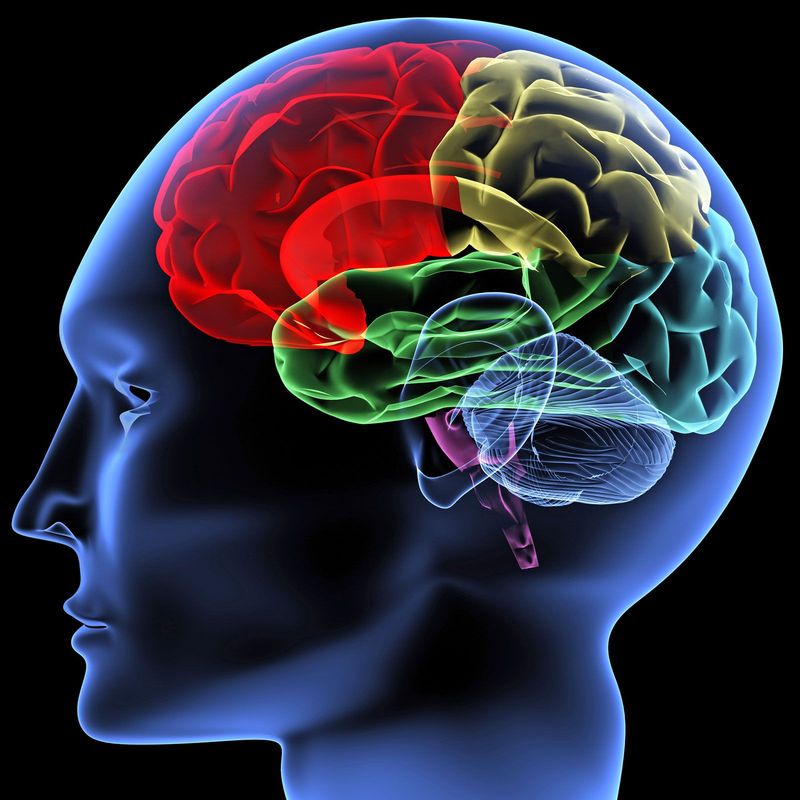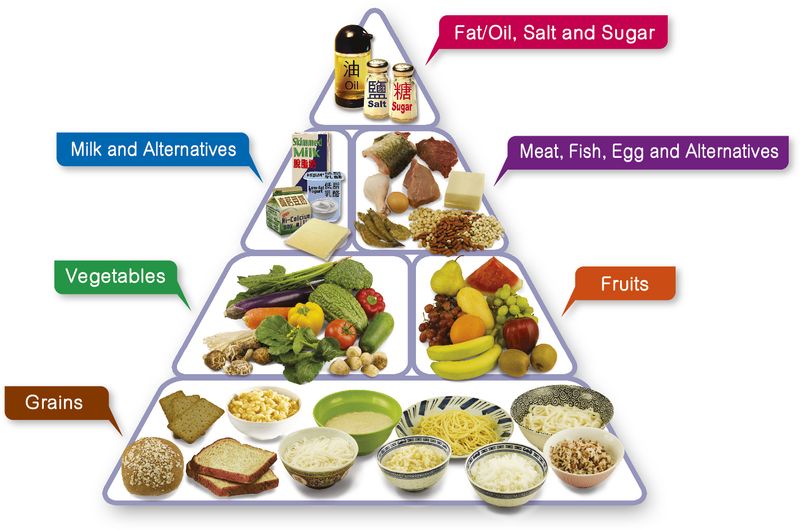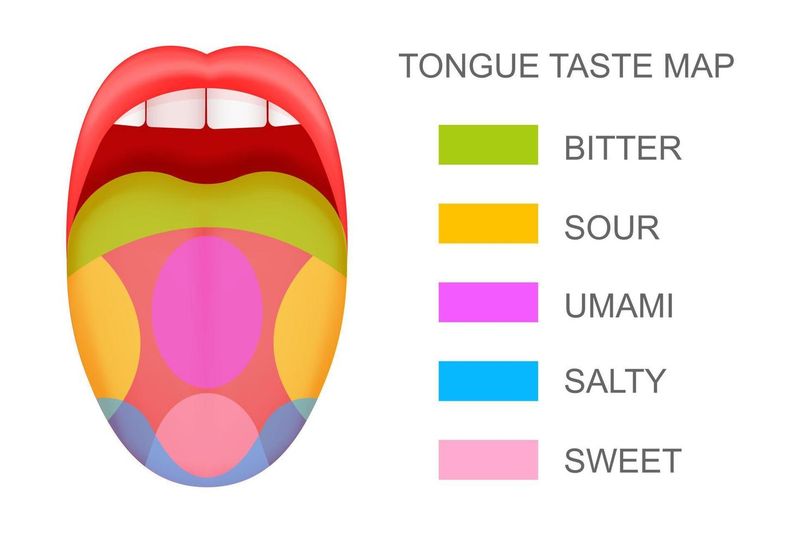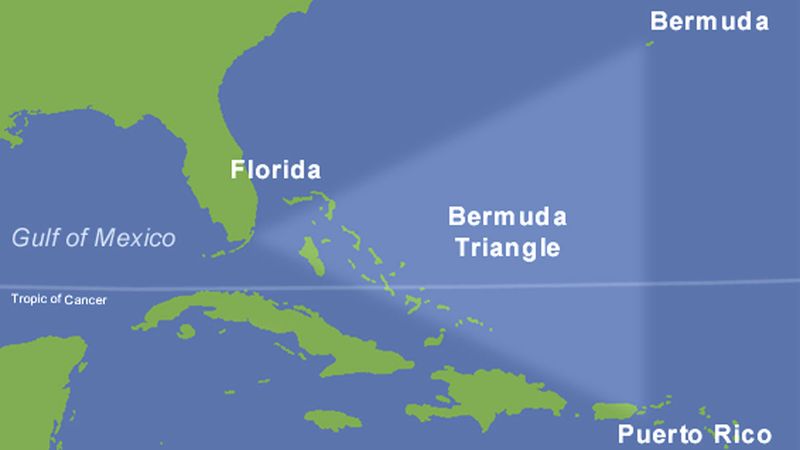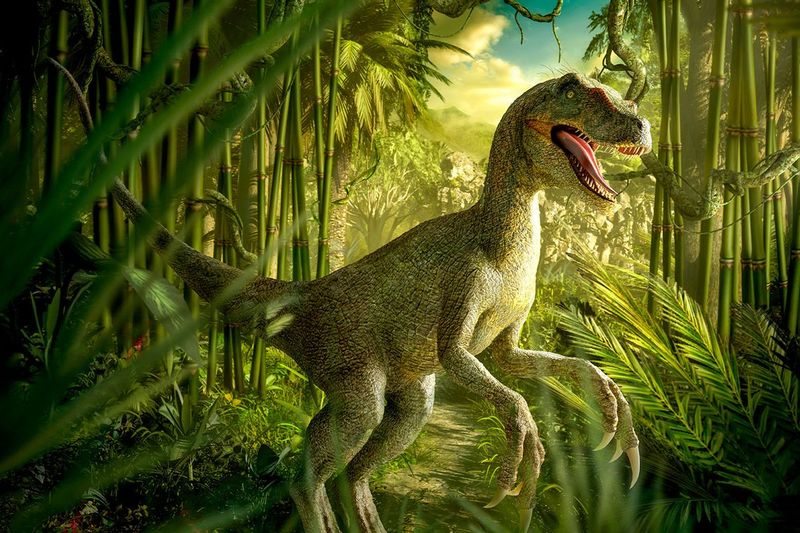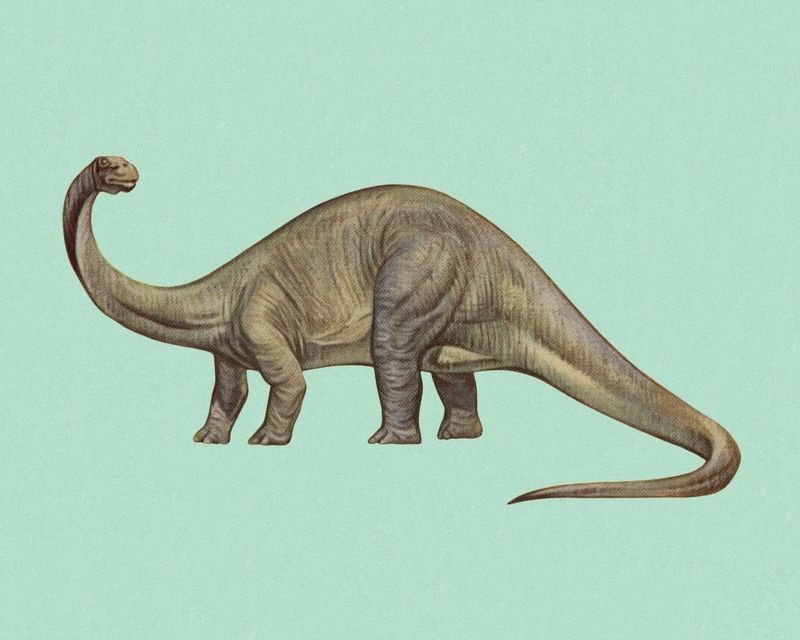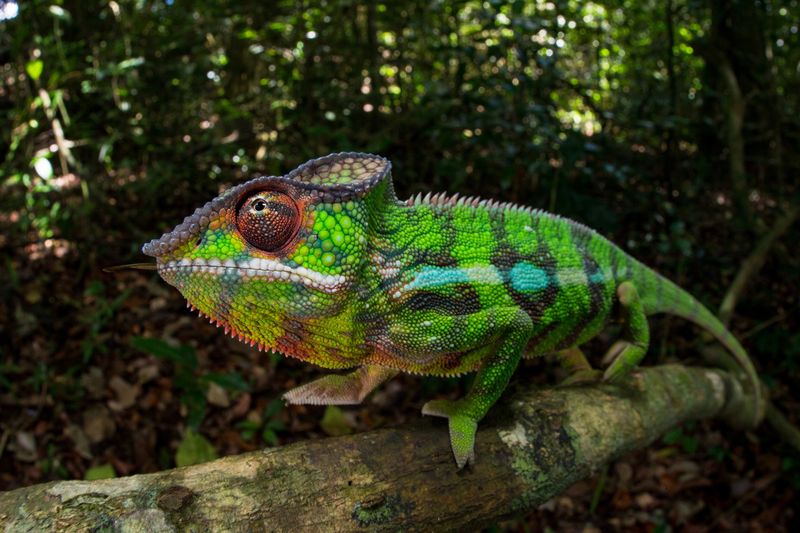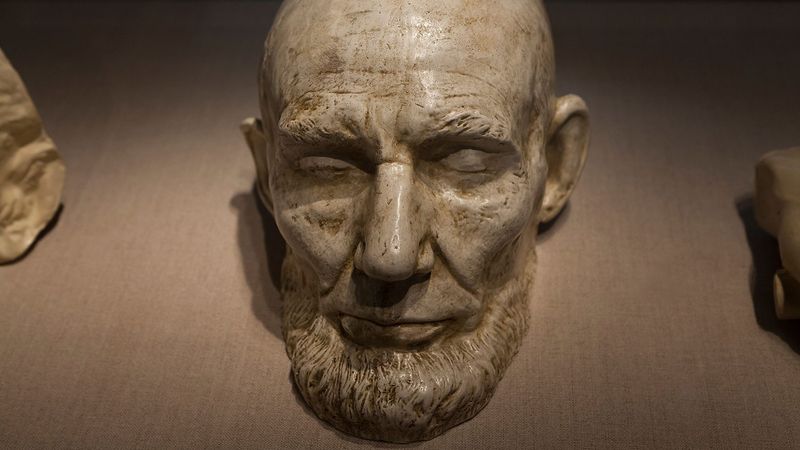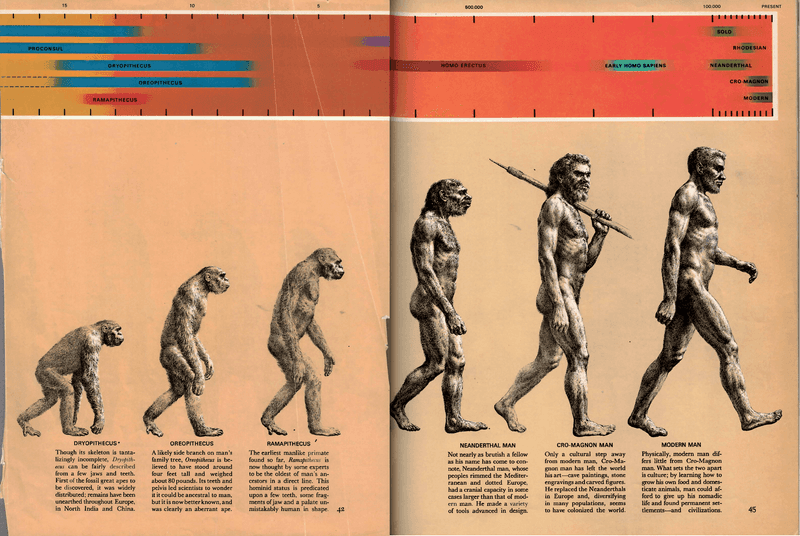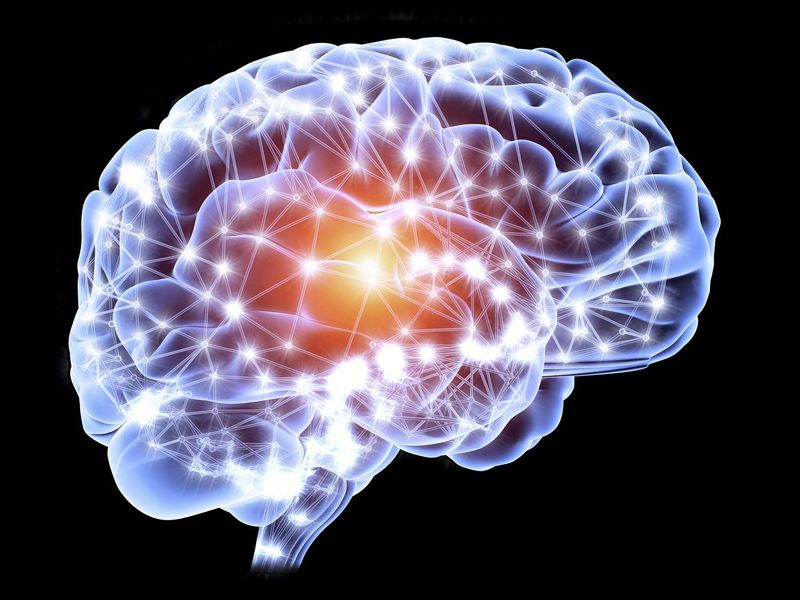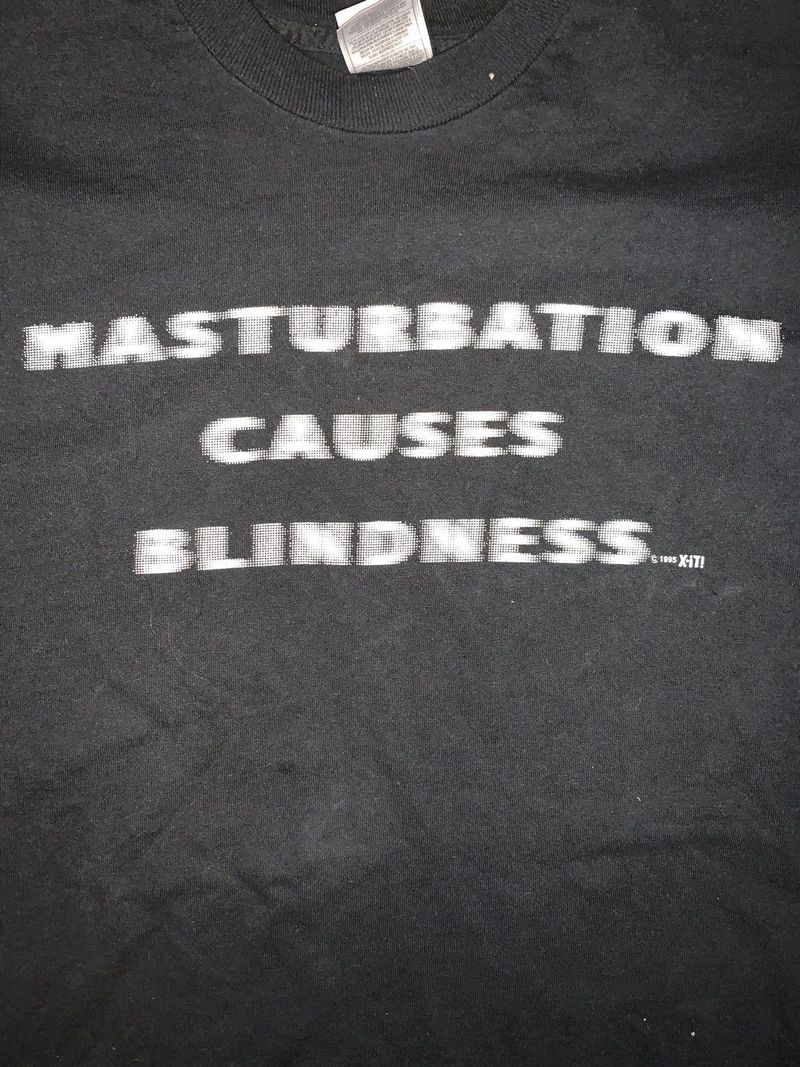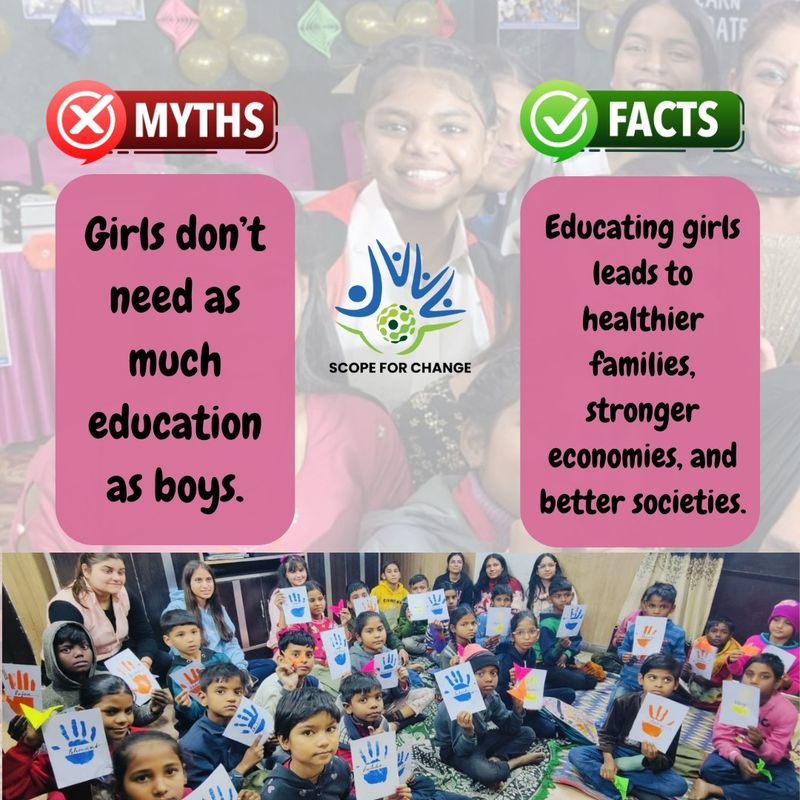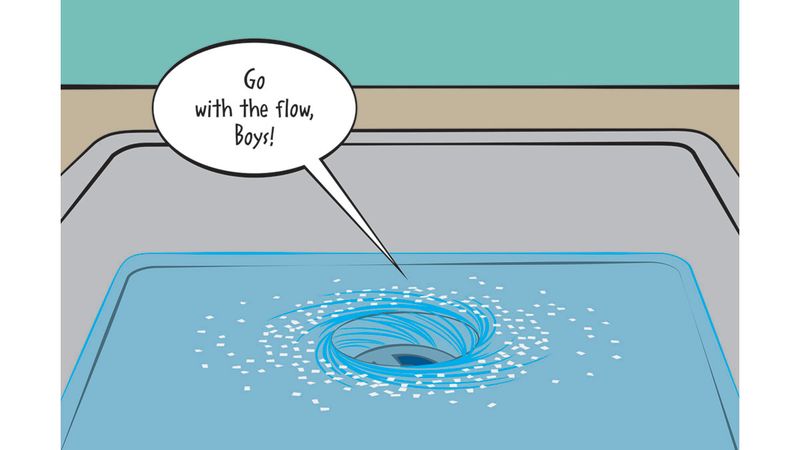Explore a collection of 33 beliefs once taught in schools that have been debunked over the years. These misconceptions span across science, history, health, and everyday life, challenging what generations once took as facts.
This post delves into a variety of myths that were once part of the educational system, providing insight into how knowledge and understanding evolve over time.
From dinosaurs to dietary guidelines, prepare to have your perceptions questioned and learn what modern science and historical research say today about these outdated teachings.
1. We Only Use 10% of Our Brains
For years, many believed humans only use 10% of their brains, largely popularized by early 20th-century authors and misunderstood scientific research. This myth was perpetuated in schools, sparking curiosity and a bit of awe about untapped potential.
However, modern neuroscience has debunked this, showing that we use virtually every part of our brain, and much of it is active most of the time, even when we’re at rest.
Brain imaging technologies like fMRI and PET scans have highlighted the brain’s complex and dynamic nature, proving it to be a highly efficient organ.
2. The Food Pyramid Is the Perfect Guide to Healthy Eating
The food pyramid, introduced in the early 1990s, was once the cornerstone of nutritional education.
It presented a hierarchical guide with grains at the base, suggesting abundant consumption, while fats and sweets were at the top, deemed to be eaten sparingly.
However, this model has since been criticized for oversimplifying nutrition, failing to differentiate between healthy and unhealthy fats or carbohydrates.
In 2011, the USDA replaced it with MyPlate, which emphasizes portion control and nutritional balance, focusing on fruits, vegetables, proteins, and whole grains, reshaping dietary guidelines to better align with current health research.
3. Pluto Will Always Be Our Ninth Planet
Pluto’s demotion from planet status shocked many who grew up learning it was the ninth planet in our solar system.
Originally discovered in 1930, it was classified as a planet for decades until 2006 when the International Astronomical Union redefined what constitutes a planet. Pluto didn’t fit the new criteria, primarily because it hadn’t cleared its orbit of other debris.
This reclassification illustrates how scientific understanding evolves. Today, Pluto is known as a “dwarf planet,” still a fascinating subject of study in astronomy classes, reminding us that science is always advancing.
4. The Tongue Has Separate Zones for Each Taste
The myth of the tongue map, which suggests different sections of the tongue are responsible for tasting sweet, salty, sour, and bitter flavors, was widely taught.
This idea originated from a misinterpretation of early 20th-century research but has been disproven by modern science. In reality, all taste sensations can be detected by any area of the tongue, thanks to taste buds scattered throughout the mouth.
This debunked belief highlights the importance of questioning and reevaluating scientific claims, ensuring educational teachings are based on accurate and current data.
5. Columbus Was the First to Discover America
For generations, students were taught that Christopher Columbus discovered America in 1492. However, this narrative overlooks the presence of indigenous peoples who had been living on the continent for thousands of years prior.
Additionally, Norse explorer Leif Erikson reached North America around 1000 AD, predating Columbus by nearly 500 years.
This historical correction emphasizes the need to recognize and respect the diverse narratives and contributions of various cultures in shaping history.
Ongoing research continues to uncover more about early transatlantic exploration, providing a richer understanding of our past.
6. Low-Fat Diets Are the Key to Weight Loss
For decades, low-fat diets were promoted as the ideal way to lose weight and maintain health. This belief stemmed from early research linking dietary fat to heart disease.
However, recent studies have shown that not all fats are harmful and that low-fat diets can sometimes lead to increased carbohydrate intake, contributing to weight gain.
Healthy fats, such as those found in avocados, nuts, and olive oil, are now recognized as essential for a balanced diet. This shift underscores the importance of understanding nutrition comprehensively rather than focusing on single nutrients.
7. Duck and Cover Will Save You from a Nuclear Attack
During the Cold War, “duck and cover” drills were a common practice in schools, teaching students to protect themselves in the event of a nuclear attack.
The belief was that taking cover under desks or against walls would shield them from the impacts of an atomic bomb.
However, the effectiveness of these drills has been questioned, as they offer little protection against the destructive force of nuclear explosions.
This practice reflects the era’s pervasive fear and the limitations of available knowledge, highlighting the importance of realistic preparedness and education in the face of modern threats.
8. The Bermuda Triangle Is a Supernatural Hotspot
For years, the Bermuda Triangle captured imaginations, with tales of ships and planes mysteriously disappearing within its borders.
This area, located between Miami, Bermuda, and Puerto Rico, was often described as a supernatural hotspot, attributed to alien activity or otherworldly forces.
However, investigative research has debunked these myths, attributing the disappearances to natural environmental factors like strong currents and unpredictable weather.
This shift from sensationalism to science highlights the importance of evidence-based explanations, encouraging critical thinking and skepticism towards unproven theories. It’s a reminder to seek factual understanding over fantastical tales.
9. Shaving Makes Hair Grow Back Thicker
The belief that shaving causes hair to grow back thicker and darker was widely circulated, leading many to delay shaving in fear of unwanted results.
This myth persists likely due to the blunt tips that shaved hair takes on as it grows back, giving an illusion of thickness. However, scientific research has shown that shaving does not affect the hair’s color, thickness, or growth rate.
Hair growth is determined by genetics and hormones, not shaving. Understanding this can help dispel unnecessary concerns about hair care practices and encourage informed grooming habits.
10. A Penny Dropped from a Skyscraper Can Kill Someone
The myth that a penny dropped from a skyscraper could kill a person below has been a longstanding urban legend. The theory suggests that the penny would accelerate to a lethal speed during its fall. However, physics proves otherwise.
Due to air resistance, a penny reaches a terminal velocity of about 25-65 mph, which, while fast, isn’t enough to cause fatal harm. The penny’s lightweight and flat shape prevent it from becoming a deadly projectile.
This myth serves as a fun demonstration of physics in action, offering a teachable moment about gravity and air resistance.
11. The Great Wall of China Is Visible from Space
The claim that the Great Wall of China is visible from space was once widely accepted, symbolizing the wall’s grandeur. However, astronauts have confirmed that it’s difficult to see the wall from low Earth orbit without aid.
It’s made of materials that blend into the natural environment, making it indistinguishable to the naked eye. This misconception highlights the power of human imagination and the allure of monumental achievements.
It also underscores the importance of verifying facts before accepting them, reminding us that seeing isn’t always believing, especially beyond Earth.
12. Dinosaurs Were Lazy, Cold-Blooded Lizards
For many years, dinosaurs were depicted as sluggish, cold-blooded creatures, similar to modern reptiles. This view was based on early fossil interpretations and limited understanding of their physiology.
However, recent research suggests dinosaurs were more dynamic and complex, with evidence indicating that some were warm-blooded and highly active.
Advanced imaging and fossil analysis have shown diverse behaviors and adaptations, challenging long-held stereotypes.
This evolution in understanding demonstrates how scientific advancements bring new life to ancient creatures, reshaping our knowledge of Earth’s history and the fascinating beings that once roamed it.
13. Drinking Coffee Stunts Your Growth
The belief that coffee stunts growth was a common warning given to children and teenagers. It was thought that caffeine consumption could negatively affect bone development, leading to shorter stature.
However, scientific studies have found no credible evidence linking coffee consumption to stunted growth. The origin of this myth is unclear, but it may have been perpetuated to discourage youth from consuming caffeine.
Today, the focus is on moderating caffeine intake to avoid potential side effects like sleep disruption and increased heart rate, rather than concerns over growth inhibition. Coffee, in moderation, is safe for most.
14. Sugar Makes Kids Wildly Hyperactive
The idea that sugar causes hyperactivity in children has been widely accepted by parents and educators for decades. This belief emerged from anecdotal observations and small studies but lacks solid scientific backing.
Extensive research has shown no direct link between sugar consumption and hyperactivity in children. The perceived connection may arise from high-energy situations like parties where sugary foods are consumed, rather than the sugar itself.
This understanding helps to alleviate parental concerns, encouraging a more balanced view of sugar’s role in diet while focusing on overall nutritional quality and portion control.
15. Lightning Never Strikes the Same Place Twice
The saying “lightning never strikes the same place twice” has been debunked by meteorological observations. In reality, lightning tends to strike prominent objects repeatedly, such as tall trees, buildings, and towers.
The Empire State Building, for example, is struck by lightning numerous times each year. This myth likely arose from the randomness of lightning strikes, leading to the false belief that once a location is hit, it’s safe from future strikes.
Understanding lightning’s behavior is crucial for safety, reinforcing the need for proper precautions during thunderstorms to prevent injuries and damage.
16. Cracking Your Knuckles Causes Arthritis
The belief that cracking knuckles can lead to arthritis is a widespread myth often shared to deter the habit. Research has not found a connection between knuckle cracking and arthritis development.
The sound occurs due to gas bubbles bursting in the joint fluid, which is harmless. While habitual knuckle cracking may result in temporary swelling or reduced grip strength, it does not appear to cause long-term joint damage.
Understanding the science behind this common action helps dispel fear, allowing people to crack their knuckles without worries about arthritis, while still encouraging moderation.
17. Going Outside with Wet Hair Will Always Make You Sick
Many believe that going outside with wet hair will lead to illness, a claim often heard from well-meaning relatives. This myth likely stems from the correlation between cold weather and colds, but the real culprit is viral infections, not temperature or wet hair.
While being wet and cold might feel uncomfortable, it doesn’t directly cause sickness. The spread of germs is more prevalent in colder months due to increased indoor gatherings.
Awareness of proper hygiene and infection control is essential in preventing illnesses, reassuring that wet hair alone won’t cause colds.
18. Babies Must Sleep on Their Stomachs
For years, pediatric advice encouraged parents to place babies on their stomachs to sleep, believing it reduced choking hazards. However, this practice has been linked to an increased risk of Sudden Infant Death Syndrome (SIDS).
Current guidelines recommend placing babies on their backs for sleep to ensure safety. This shift in advice exemplifies how advancements in medical research can alter parenting practices, prioritizing infant well-being.
Understanding and adapting to these changes can significantly impact child safety, highlighting the importance of staying informed with the latest health recommendations.
19. You Should Wait an Hour After Eating Before Swimming
The notion that one must wait an hour after eating before swimming has been a widely accepted precaution. This belief suggests that swimming on a full stomach could lead to cramps, risking drowning.
However, there’s little scientific evidence supporting this claim. While it’s true that digestion may divert some blood flow from muscles, it doesn’t significantly impair swimming capability.
It’s generally safe to swim after eating, provided one feels comfortable and isn’t experiencing any discomfort. This myth serves as a reminder to trust one’s body cues, offering freedom to enjoy swimming activities without undue concern.
20. Carrots Sharpen Your Night Vision
The belief that carrots improve night vision originated during World War II when British propaganda suggested that pilots’ excellent night-time accuracy was due to eating carrots.
In reality, while carrots are rich in vitamin A, which is essential for eye health, they don’t significantly enhance night vision. The myth was intended to disguise the use of radar technology.
While a balanced diet supports overall eye health, no specific food provides superhuman vision abilities.
Encouraging varied fruit and vegetable intake ensures adequate nutrition, supporting normal vision and dispelling exaggerated claims about carrots.
21. The Brontosaurus Doesn’t Exist at All
The Brontosaurus was once thought to be a scientific mistake, a misidentified species due to fossil confusion. For years, paleontologists believed the bones belonged to the Apatosaurus.
This narrative changed with recent studies that identified distinct differences, reinstating Brontosaurus as a valid genus. This reversal highlights the dynamic nature of scientific discovery, where new evidence can reshape our understanding of history.
It encourages open-mindedness and adaptability in learning, illustrating how science evolves with new data and technology. The Brontosaurus now symbolizes the ongoing adventure of paleontology and the thrill of discovery.
22. Chameleons Change Color Just to Match Their Surroundings
The idea that chameleons change color solely to blend into their surroundings is a simplified view of their capabilities. In reality, chameleons change color primarily for communication, temperature regulation, and social signaling.
Their color changes can indicate mood, aggression, or readiness to mate, and can also help regulate body temperature by absorbing or reflecting light.
This understanding reveals the complexity of these creatures, showcasing how adaptations serve multiple purposes beyond mere camouflage.
Observing chameleons in the wild offers insights into animal behavior and the intricate mechanisms of evolution.
23. Nail and Hair Growth Stop Immediately After Death
The belief that nails and hair continue to grow after death is a common misconception. In reality, what appears as growth is actually the skin retracting as the body dehydrates and shrinks, making nails and hair seem longer.
This myth likely persists due to the macabre fascination with post-mortem changes. Understanding the biological processes that occur after death provides clarity, debunking myths and encouraging a scientific perspective on human anatomy.
This knowledge can aid in dispelling fears and misunderstandings about the human body, fostering a more informed and respectful view of life and death.
24. Humans Evolved Directly from Modern Apes
The misconception that humans evolved directly from modern apes oversimplifies the complex process of evolution. In reality, humans and modern apes share a common ancestor from which both lineages diverged millions of years ago.
This understanding emphasizes the branching nature of evolution rather than a linear progression. Educational emphasis on evolutionary biology enriches understanding of our origins and the intricate web of life.
Recognizing the shared ancestry with modern apes fosters appreciation for biodiversity and the subtle nuances in evolutionary history, providing a clearer picture of how species, including humans, have evolved over time.
25. Mercury in Thermometers Is Perfectly Safe
For years, mercury thermometers were common in schools, homes, and medical settings, considered reliable tools for measuring temperature. However, the realization of mercury’s toxicity has led to a shift away from these devices.
Mercury can have harmful effects on health and the environment, leading to safer alternatives like digital or alcohol-based thermometers.
This change underscores the importance of continuous safety evaluations of household items, promoting awareness about the potential dangers of hazardous substances.
Embracing safer technologies reflects ongoing efforts to protect health and the environment, educating future generations on responsible material use.
26. Brain Cells Can’t Regenerate Once They Die
The belief that brain cells, once lost, cannot regenerate has been a longstanding misconception. Recent neuroscience research has uncovered the brain’s ability to produce new neurons, particularly in regions like the hippocampus.
This process, known as neurogenesis, highlights the brain’s remarkable capacity for adaptation and recovery. Understanding this capability offers hope for developing treatments for neurodegenerative diseases and brain injuries.
It emphasizes the brain’s plasticity, encouraging continued exploration into how lifestyle, environment, and therapies can promote brain health and regeneration, offering promising avenues for enhancing cognitive function and recovery.
27. Masturbation Causes Blindness
The myth that masturbation causes blindness is one of many misleading claims surrounding the topic, often used to discourage the practice.
There is no scientific basis for this assertion, and it reflects historical attitudes towards sexuality rather than evidence-based medicine. Understanding and debunking such myths is important for promoting healthy attitudes towards sexuality.
Sexual education today focuses on providing accurate information, encouraging safe practices, and fostering a positive outlook on sexual health.
This shift towards openness and education empowers individuals to make informed choices about their bodies and well-being.
28. Natural Resources Will Never Run Out
The belief that natural resources are inexhaustible has been challenged by growing awareness of environmental sustainability. The reality is that resources like fossil fuels, minerals, and fresh water are finite and depleting.
This myth underscores the importance of responsible consumption, conservation efforts, and exploring renewable energy sources to ensure a sustainable future.
Education on environmental science and resource management is crucial for fostering stewardship and innovation.
Encouraging mindful resource use and supporting sustainable practices contribute positively to global ecological health, highlighting the imperative to protect our planet for future generations.
29. Hurricanes and Tornadoes Avoid Big Cities
The notion that hurricanes and tornadoes avoid big cities is a misconception. While these natural disasters may appear to bypass urban areas due to their relative rarity, they can and do affect cities with devastating consequences.
Factors like geography and climate patterns determine where these storms occur, not urban development. Understanding the risks and improving city preparedness are essential for minimizing damage and enhancing public safety.
Community awareness and infrastructure resilience play critical roles in protecting urban populations from the impacts of severe weather events, reinforcing the need for effective disaster planning.
30. Girls Don’t Need as Much Education as Boys
The outdated belief that girls require less education than boys reflects historical gender biases that limited opportunities for women.
This myth has been debunked by recognizing the equal potential and rights of all genders to access education and pursue careers. Education empowers individuals, promoting social and economic development, and fostering gender equality.
Efforts to eliminate educational disparities continue to create inclusive environments where everyone can thrive.
Emphasizing the importance of education for all challenges discriminatory norms and supports the advancement of society as a whole, promoting equity and empowerment for future generations.
31. Water Spirals Down the Drain Differently in Each Hemisphere
The idea that water spirals down drains in different directions depending on the hemisphere is a popular misconception.
While the Coriolis effect influences large-scale weather patterns, it doesn’t significantly affect small bodies of water like those in sinks or bathtubs. Instead, the direction of water flow is determined by the shape of the basin and the initial motion of the water.
This myth serves as an entertaining example of how scientific principles are often misunderstood or exaggerated, highlighting the need for accurate science communication and critical thinking to discern fact from fiction.
32. Artificial Sweeteners Are Always Better Than Sugar
The notion that artificial sweeteners are always a healthier alternative to sugar has been debated.
While they offer a low-calorie option and may benefit those managing diabetes or weight, some studies suggest potential health concerns with excessive consumption. Individual responses can vary, and moderation is key.
Understanding the distinctions between different sweeteners encourages informed dietary choices. Emphasizing a balanced diet rich in whole foods remains crucial for overall health.
This discussion highlights the importance of scrutinizing food and nutrition claims, fostering a nuanced approach to dietary habits that considers both benefits and risks.
33. Searing Meat Seals in the Juices
The culinary myth that searing meat seals in juices has been debunked by food scientists. Searing creates a flavorful crust but does not prevent moisture loss. Cooking methods and temperatures influence juiciness, not the initial searing process.
Understanding this helps improve cooking techniques, allowing for more tender and flavorful results. Emphasizing the importance of proper cooking knowledge empowers home cooks to experiment and achieve desired textures and flavors.
This myth’s debunking highlights the intersection of science and culinary arts, encouraging a thoughtful approach to cooking that enhances the dining experience.

